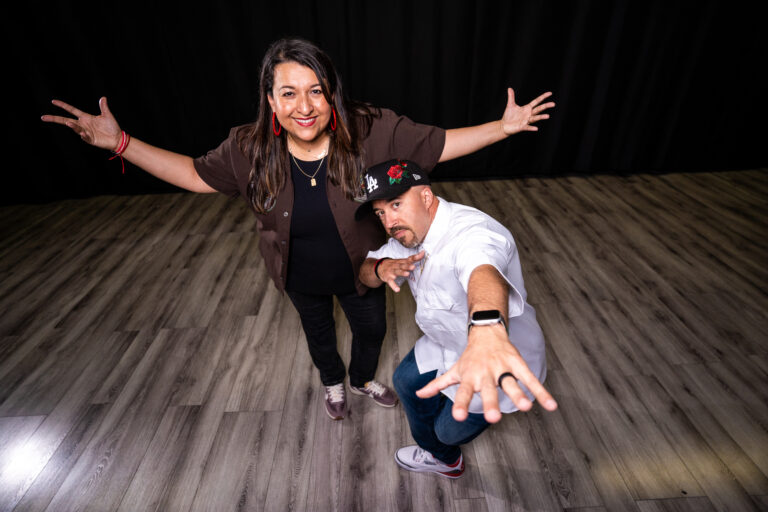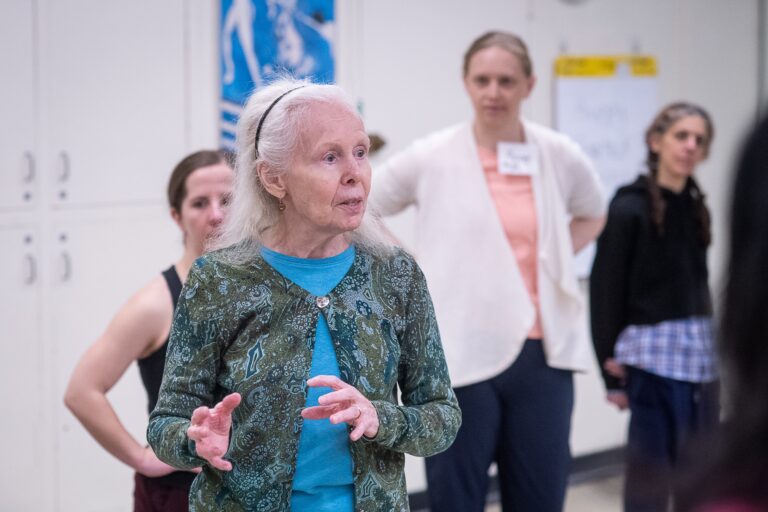Weighing the pros and cons of making this business move
Sandra Morgan with students at nonprofit Dimensions Dance Center
Becoming a nonprofit organization could take your studio and students to new heights. Not only will it give you access to grants and tax exemptions, but it may also, most importantly, increase community support and respect for your business. How do you know if it’s the right structure for you? Here, four studio owners share their experiences and lend advice.
Sarah Balda
Dance Arts Centre
(120 students)
Melbourne and Indian Harbour Beach, FL
Sarah Balda bought Dance Arts Centre in 2005 with the intention of turning it into a nonprofit. After two years of research, one year of government processing time and an estimated $2,500 in accountant fees, her request was approved. The studio has received several grants, most notably from Target Corporation, which fully sponsored Brevard Dances!, a program that offers free classes to underserved communities. A local theater donates space for Dance Arts performances.
Balda, who writes all grant applications herself, suggests finding a mentor who is involved in nonprofit. “You have to understand the fundamental finances of your business model. You can’t run your school off grants and must still operate mostly from tuition,” she says. “Think about your long-term goals. This is not a venture for those who want to offer dance cut and dry. If you have the community at large in mind and want to get outside the studio, it’s the perfect solution.”
Sandra Morgan
Dimensions Dance Center
(250 students)
St. Louis, MO
Sandra Morgan applied for nonprofit status in 1998, four years after becoming the president and artistic director of Dimensions Dance Center. After the school became a 501(c)3, grants that Morgan applied for began trickling in from the Regional Arts Commission, Missouri Arts Council, Emerson Electric and Boeing. Still, grant funding varies greatly each year, ranging from 1 to 10 percent of the studio’s income, and individual donations make up about 5 percent. Most funding is generated by tuition.
Morgan sees business and educational advantages. “When we offer programming for schools and other organizations, we’re getting our name out there and offering dance to kids who can’t afford it,” she says. While the studio is not in a diverse area, her scholarship program, funded by grants only eligible to nonprofits, pulls from surrounding communities with varied backgrounds. “We’re exposing students to people they would have never become friends with, otherwise,” she says.
There are some tricky situations, like parents coming to Morgan during tax season, asking to claim tuition as a tax deduction. “They have to understand that they profit in ways other than their bills’ final numbers,” says Morgan. She advises owners to help parents understand that the nonprofit environment—the opportunities and diverse student body—is the real benefit to their children.
Nela Niemann
Blue Ridge Studio for the Performing Arts
(150 students)
Berryville, VA
For the seven years following Blue Ridge Studio for the Performing Arts’ 1991 opening, owner Nela Niemann didn’t pay herself a dime. She saw a need for the arts in her rural farming community, which had been cutting programs, so her private studio’s mission was to support any students who wanted to dance.
“When I grew up, the only people who took ballet were those who could afford it,” she says. “I didn’t want to turn anyone away. So I figured if we were running like a nonprofit, why not become one?”
Blue Ridge became a 501(c)3 in 1997 and receives most donations through fundraisers like open house events, silent auctions and bake sales. Niemann held a dance marathon a few years ago where donors sponsored a student, giving a dollar amount for each hour danced. Donations make up 7 percent of the studio’s income, with most revenue coming from tuition. And last year, the studio gave $20,000 in scholarships to kids who couldn’t afford lessons.
Niemann runs the office alone and depends on volunteers to fundraise and staff recitals. Parents of scholarship students are usually the first to help out. “It’s a huge commitment, especially if you have a small staff,” says Niemann. “You have to know what you’re in for and really ask yourself, ‘Why do I want to do this?’ I’m not the perfect example, but I’ve never regretted the decision.”
James Robey
Ridgefield Conservatory of Dance
(265 students)
Ridgefield, CT
When Ridgefield Studio of Classical Ballet’s founder Patricia Schuster passed away, the community was in for unexpected news––she donated the school to Ridgefield Playhouse for Movies and the Performing Arts in her will. James Robey was hired to take her place, guiding the privately owned studio’s yearlong transition into the nonprofit Ridgefield Conservatory of Dance.
Since the switch in 2003, RCD has tripled its growth and increased class offerings, from 305 to 680 students taking classes per week. While tax exemptions on rentals and printing materials are helpful, Robey says the most valuable element of being a nonprofit is the respect it demands. But despite the school’s status, foundations are hesitant to donate because the school is located in an affluent area. Funding by community members is key.
The board of directors must approve all changes, so passing decisions can take “frustratingly long,” says Robey. “You have to explain each small detail of every step you want to make, which slows down the process and can be a pain. But having a board keeps everyone professional and outside-agenda-free.” In the end, he admits that a studio doesn’t have to be a nonprofit to function like one. “If you have a community-oriented mission, most of these things can be done within a private organization,” he says. DT
Photo: Sandra Morgan with students at nonprofit Dimensions Dance Center (by Stephen Kennedy, courtesy of Dimensions Dance Center)



